Compression Socks for Heart Failure: Can They Help?
Heart failure is a scary condition: it occurs when your heart doesn’t pump enough blood volume for your body’s needs. However, it doesn’t mean that your heart has stopped and it can be managed with adequate medical care.
Can compression socks be helpful when you suffer from heart failure? As blood circulation is the major aspect affected by congestive heart failure, anything to support your circulatory system is very useful at this stage. By boosting blood flow in the lower legs, and particularly stimulating its circulation back up towards the heart, graduated compression stockings or socks can be a helpful tool for heart failure patients.
With adequate medical advice, you can get lots of benefits from wearing compression socks. In this article, we’ll explore:
- The role of compression stockings for heart failure;
- Their benefits;
- When and how long to wear them;
- How to pick the best socks for your condition.

How Can Compression Socks Help with Heart Failure?
Congestive heart failure means that the heart is no longer pumping blood through the body in the right quantity. This can cause serious health problems, fatigue, damage to organs, etc. But, with attention to medical recommendations, lifestyle changes, and a few extra tools, it can be managed and the risks reduced over time.
Wearing compression socks boosts blood flow in the lower legs, reducing the risk of developing blood clots, varicose veins, venous insufficiency, and other circulatory problems. They also reduce inflammation and swelling and help muscles recover quicker after exercise. Through the pressure that compression socks apply on the legs, they stimulate the peripheral circulation and avoid any blockages.
This is essential in cases of heart failure, as it helps blood continue to flow normally not just in the legs, but throughout the body. Moreover, compression socks help those wearing them feel more energized and reduce issues like cold or numb feet. Graduated compression socks, in particular, increase circulation from the periphery towards the heart - fluidifying blood flow against any gravitational push.
The Benefits of Compression Socks for Heart Failure
The main benefit of wearing compression socks is on the blood flow in the lower legs. These garments stimulate circulation, allowing the blood to flow continuously throughout the legs and back to the rest of the body. Graduated compression socks, in particular, support upwards circulation - avoiding any blood pooling in the lower extremities.
Boosting Circulation
It is well documented that compression garments improve circulation in the area of the body where they are worn. In the case of compression socks, they’re essential for maintaining good blood flow in a number of circumstances. They’re recommended by doctors for preventing blood pooling and the formation of blood clots after surgery or when bed-ridden. Equally, many professions where people spend a long time on their feet (e.g. nurses or teachers) wear compression socks to prevent poor circulation, swelling, and discomfort. Finally, compression socks are among the tools used by long-haul flight travelers to reduce any risks associated with lack of movement, such as DVT (deep vein thrombosis).
Reducing Swelling
Through an increase in blood flow in the lower legs, compression socks help reduce inflammation and swelling in the area. This contributes to legs feeling more energized and comfortable, as well as to speeding up recovery after a long time on your feet.
Assist in Preventing Blood Clots
One particular risk of blood pooling in the veins is the formation of blood clots. When blood flow is impeded, it is essential to use any means necessary to stimulate it. Otherwise, blood will pool in the veins and its platelets are more likely to stick close together, creating a clot. Slowly moving blood is a condition encountered by those suffering from heart failure or from DVT - over time, it can lead to a heart attack, stroke, or other severe medical problems.

To combat blood clots in the leg veins, graduated compression socks help push it back up towards the heart. This maintains a regular flow and reduces the risk of clotting.
Improved Energy Levels
Better blood flow is also associated with improved energy levels. Blood delivers oxygen and nutrients to the muscles, helping them recover from efforts and contributing to having more energy for any activity. Moreover, a lack of swelling or discomfort in the lower legs will also support you in being more active and energetic throughout the day.
Lower Risk of Complications
One of the chief complications around insufficient blood flow is the creation of blood clots. But it is not the only one. Patients with bad peripheral circulation can develop venous insufficiency, deep vein thrombosis, and other medical conditions.
Support for Vein Health
By improving circulation and ensuring that blood flows normally through the veins, compression socks play a part in avoiding medical conditions linked to the veins and arteries. They can also help relieve the symptoms of issues such as varicose veins.
When and How Long to Wear Compression Stockings for Heart Failure
How long you wear compression socks depends on several factors: comfort levels, personal circumstances, other medical conditions, activity levels, etc.
If you have serious medical conditions like heart failure, you should first discuss wearing compression socks with your doctor. They will advise on the type of compression you should look into, compression levels, as well as length of wear. In all cases, it’s best to start off by getting used to the socks, wearing them for a short period of time, and slowly increasing this as you become more comfortable.
There are no particular times of day or scenarios when wearing compression socks will be more beneficial for heart failure patients. They can boost blood flow on an ongoing basis throughout the day. However, at times when you know you’ll be immobile for a long stretch of time (e.g. before going on a long-haul flight) or if you know you’ll be on your feet a lot (walking, traveling, or at work), compression socks will be particularly effective for keeping peripheral blood flow going.
Best Compression Socks for Heart Failure
While compression socks can be a real help for managing symptoms of chronic venous insufficiency, congestive heart failure, DVT, and more, they need to tick off a few boxes to ensure you get the full benefit of wearing them. Here are some useful tips.
Finding the Right Size and Fit
If your socks don’t feel tight enough, they simply will not work on the circulatory system. Compression socks shouldn’t roll down, bunch, or sit any lower than just under the knee (for knee-high socks). At the same time, they should never be so tight that they cut off your circulation or cause tingling or numbness.
To find the right size for you, start by measuring the circumference of your calf muscles. Then, use this sizing guide to match against our compression socks catalogue.
Selecting the Right Compression Level
Another key element of wearing compression socks is to find the right level of pressure applied to the legs. Since these garments work by tightly squeezing the lower legs, there are different levels of strength that you can experience.

Most people will wear moderate compression (15-20 mmHg), which benefits anyone from athletes to nurses and teachers, and even those suffering from milder health conditions such as edema, or during pregnancy.
However, for more serious conditions, it’s important to go up in pressure level. The firmer 20-30 mmHg socks are usually prescribed by doctors, while the 30-40 mmHg range is prescription-only. These compression socks help with DVT, varicose veins, blood clots, etc. They can be beneficial for boosting blood flow in the case of heart failure, and your doctor can advise what level you should start at.
Opt for Graduated Compression
In the case of heart failure, we are looking for compression socks to provide a boost in blood flow, and specifically to overcome downward gravitational pressure that can cause the blood to pool around the lower legs and feet. While many compression items, including calf sleeves and socks, provide a uniform compression throughout the limb, graduated compression socks are specifically designed to help upwards blood flow.
They are tighter around the ankle, with pressure slowly decreasing as they climb to underneath the knee. As a result, blood flow is stimulated upwards, no matter what position you keep your legs in. This helps direct blood towards the heart, supporting it in pumping blood normally throughout the body.
Considerations and Precautions
Anyone suffering from high or low blood pressure, blood flow problems, or heart problems, should first consult with a medical professional before adopting compression socks. This is to check compatibility and avoid any side effects.
People suffering from nerve damage (like peripheral neuropathy), diabetes, or allergies in the lower legs, could find compression socks to worsen their symptoms. While compression socks are generally very safe to use, it’s important to adapt wearing them to your lifestyle, personal circumstances, and medical situation.

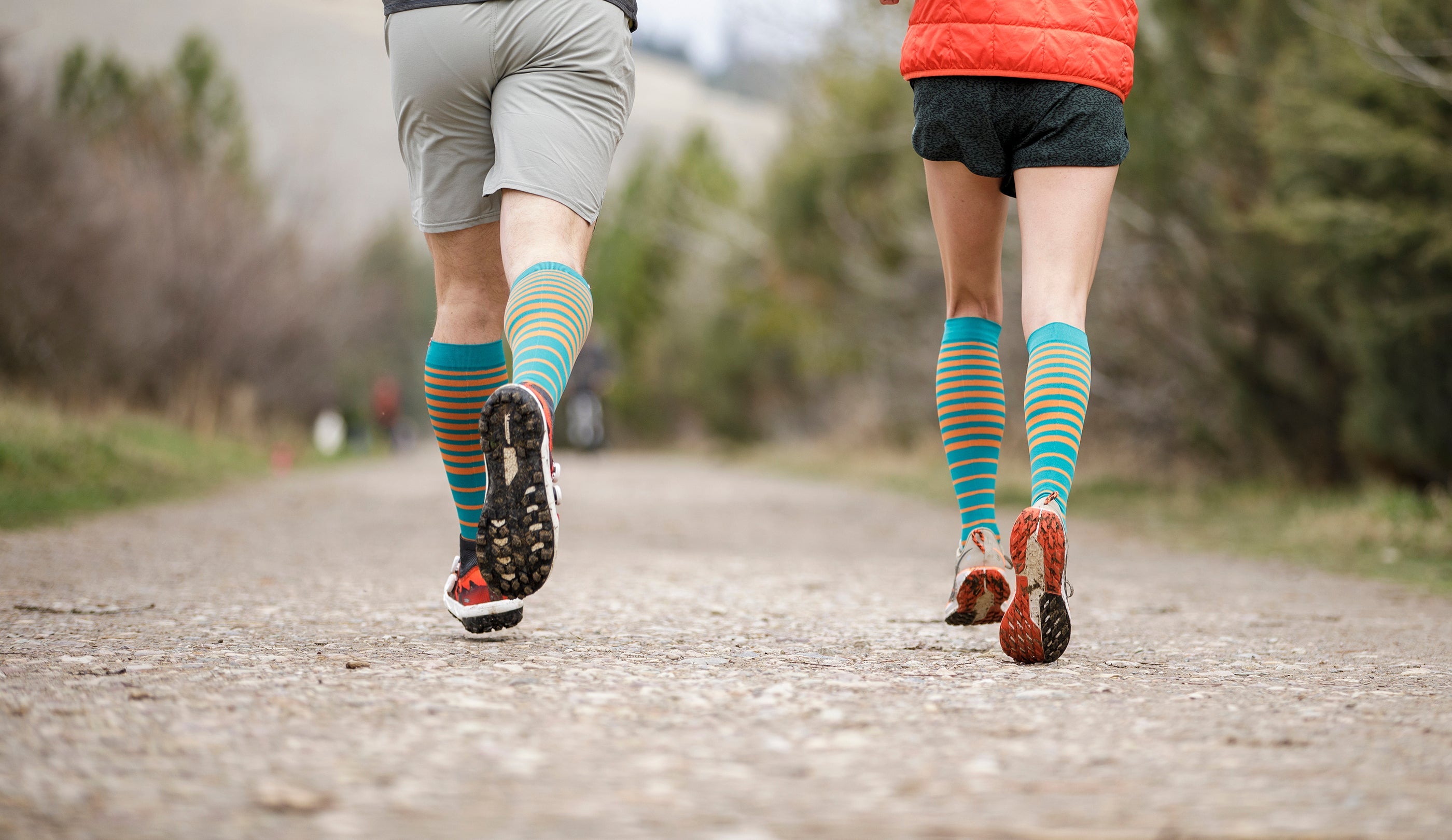








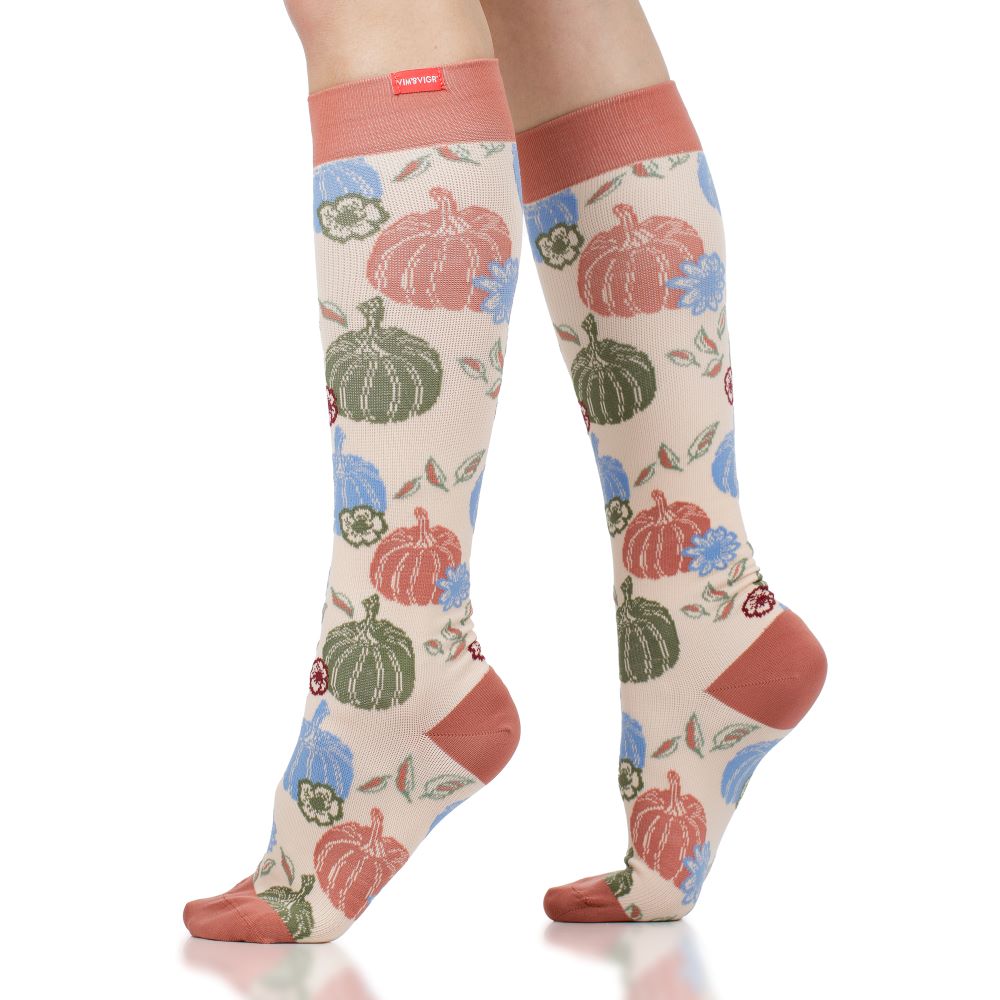
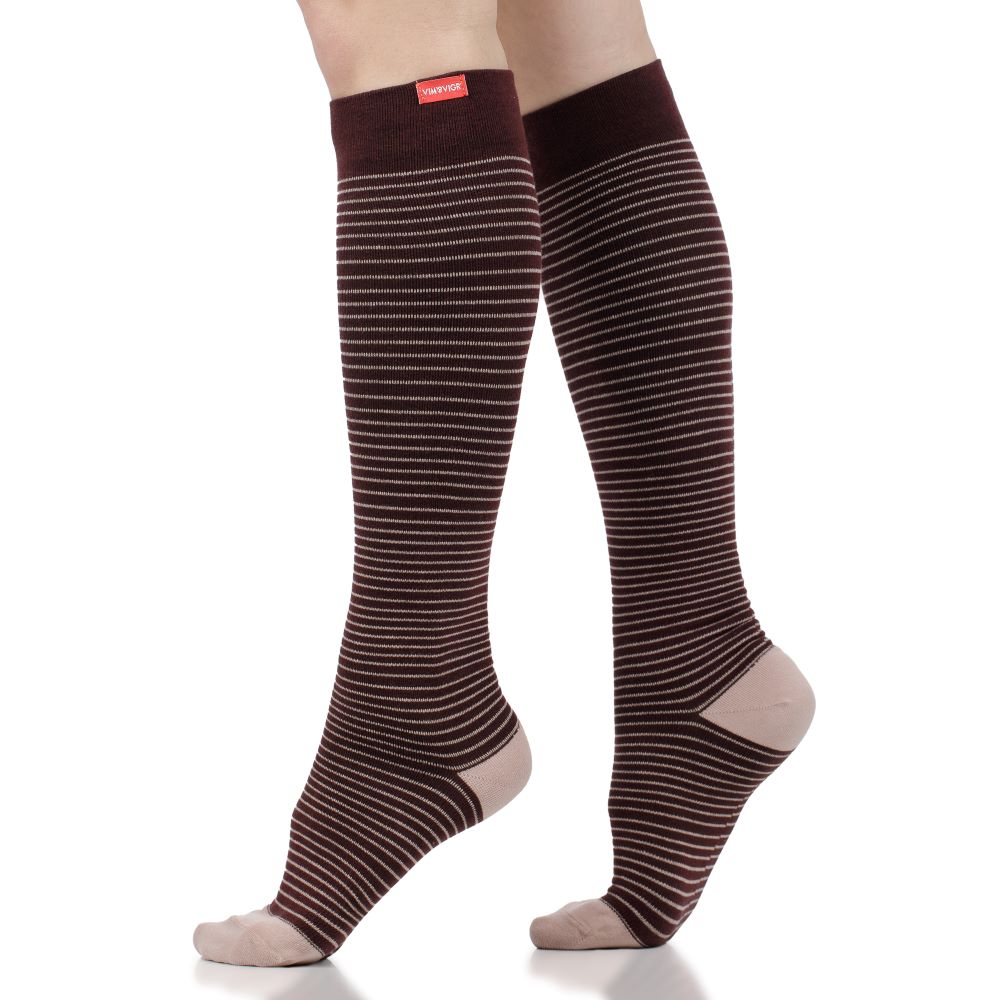
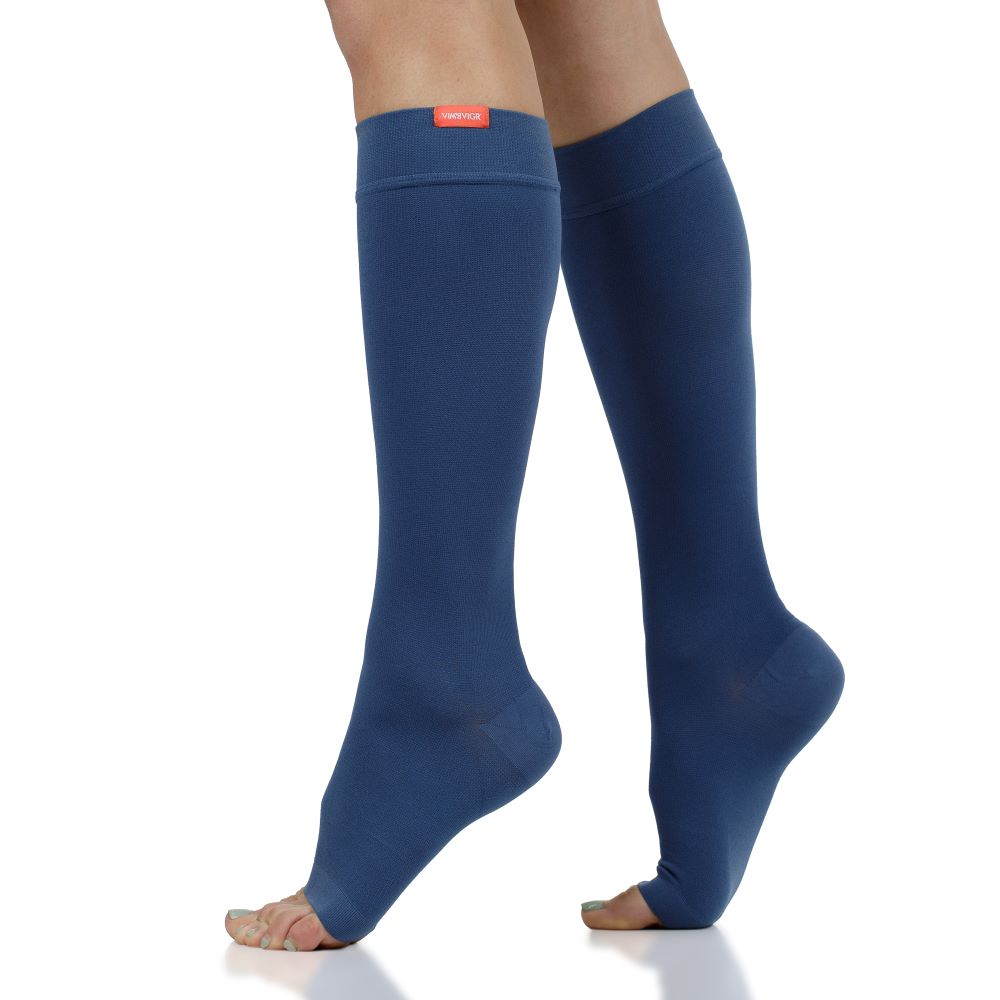


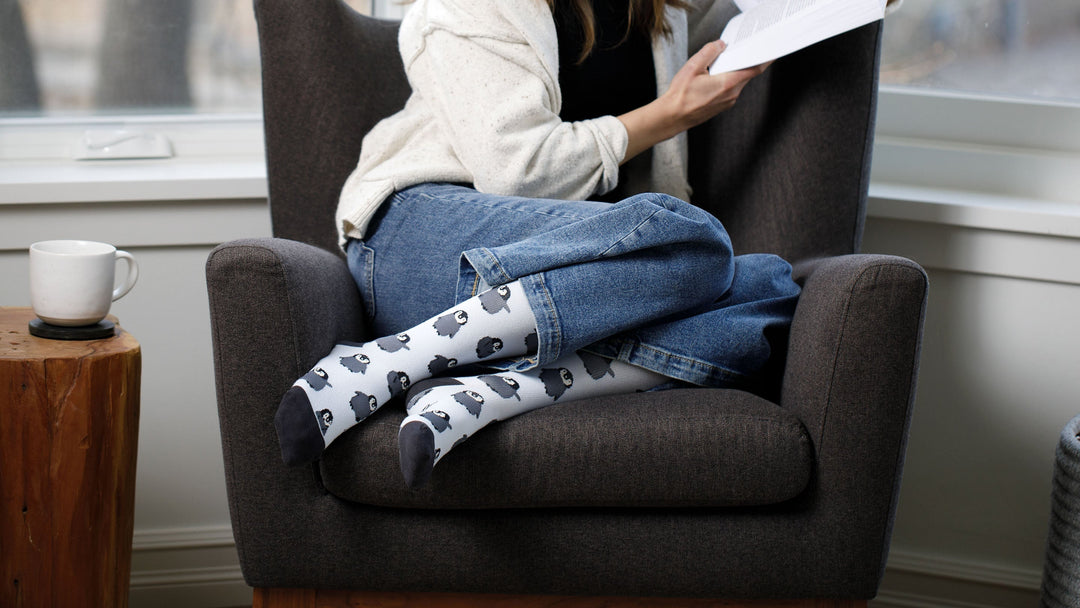



Leave a comment